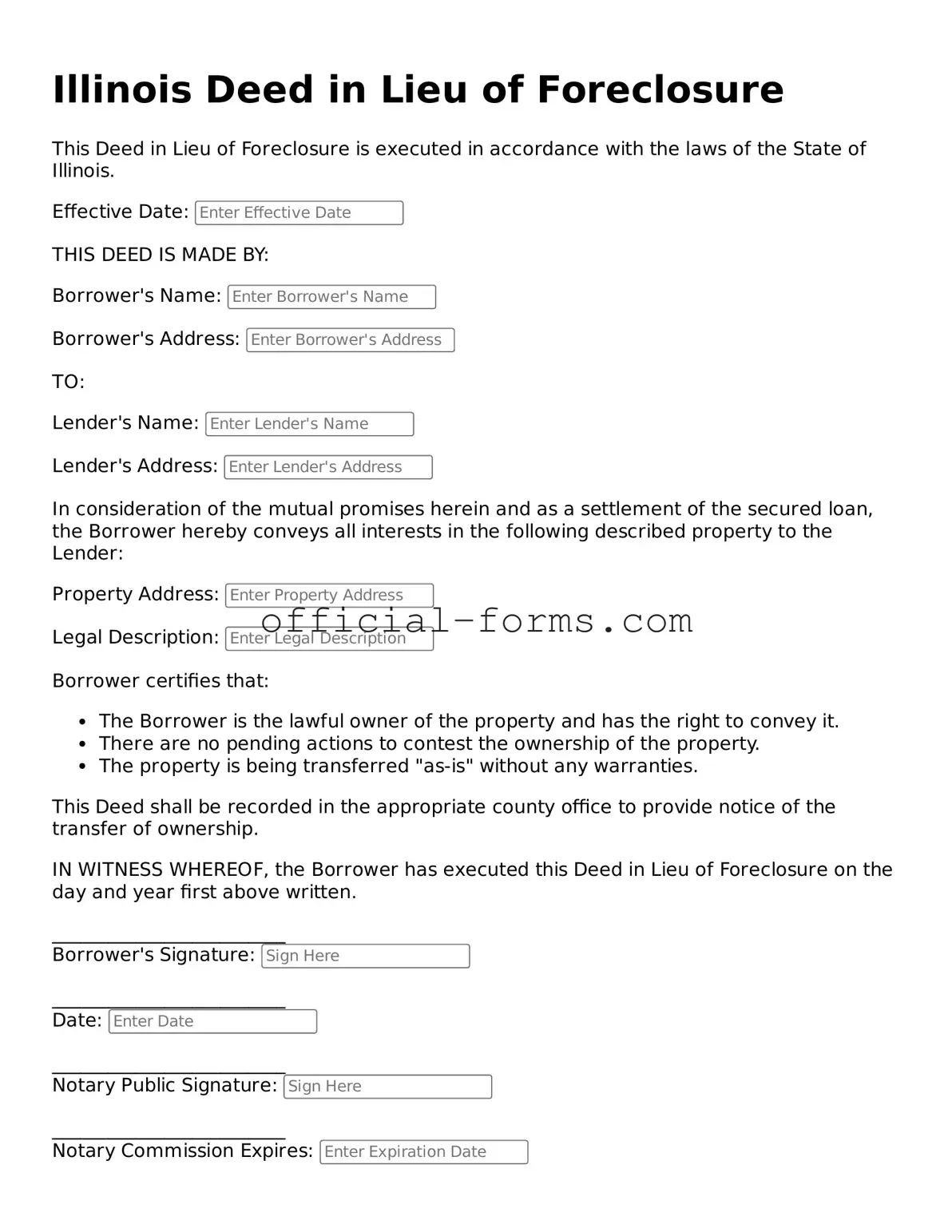Official Illinois Deed in Lieu of Foreclosure Document
The Illinois Deed in Lieu of Foreclosure form is a legal document that allows a homeowner to voluntarily transfer their property to the lender in order to avoid the lengthy foreclosure process. This option can provide a more dignified way to exit homeownership when facing financial difficulties. By understanding this form and its implications, homeowners can make informed decisions that may ease their financial burdens.
Open My Deed in Lieu of Foreclosure Now
